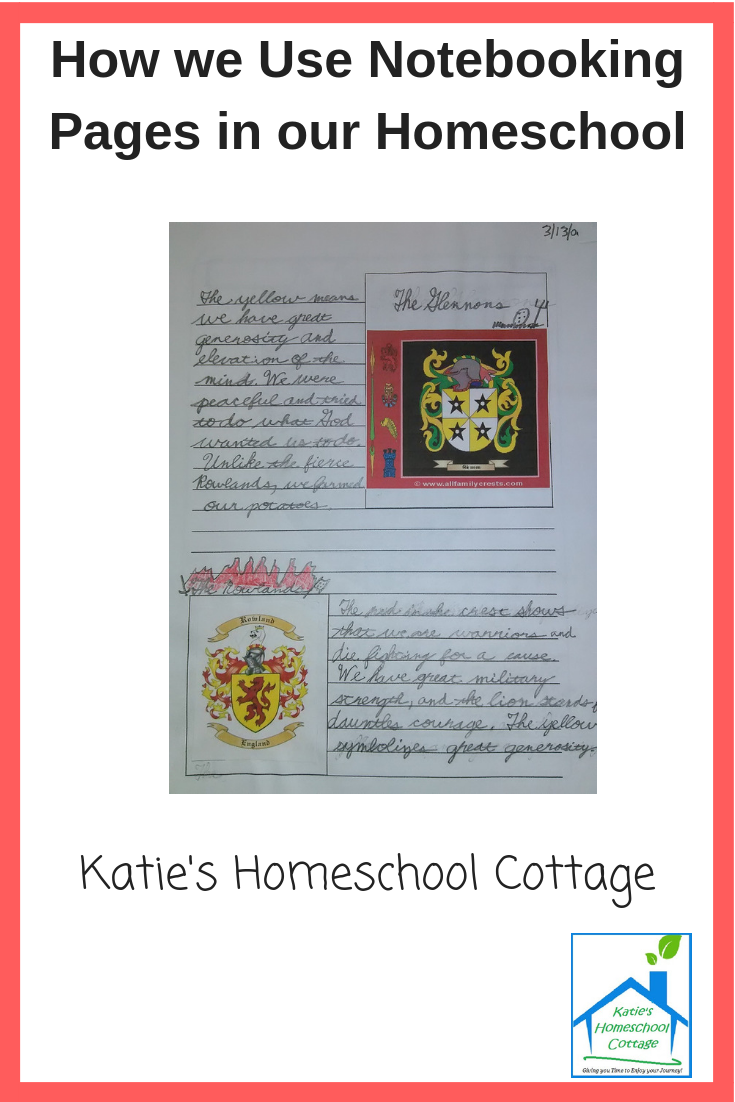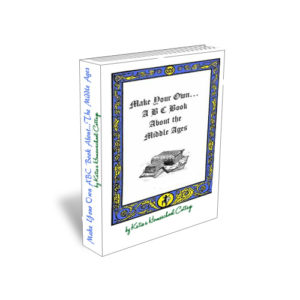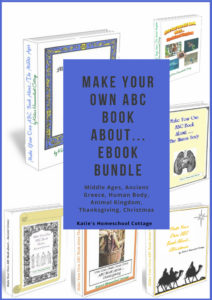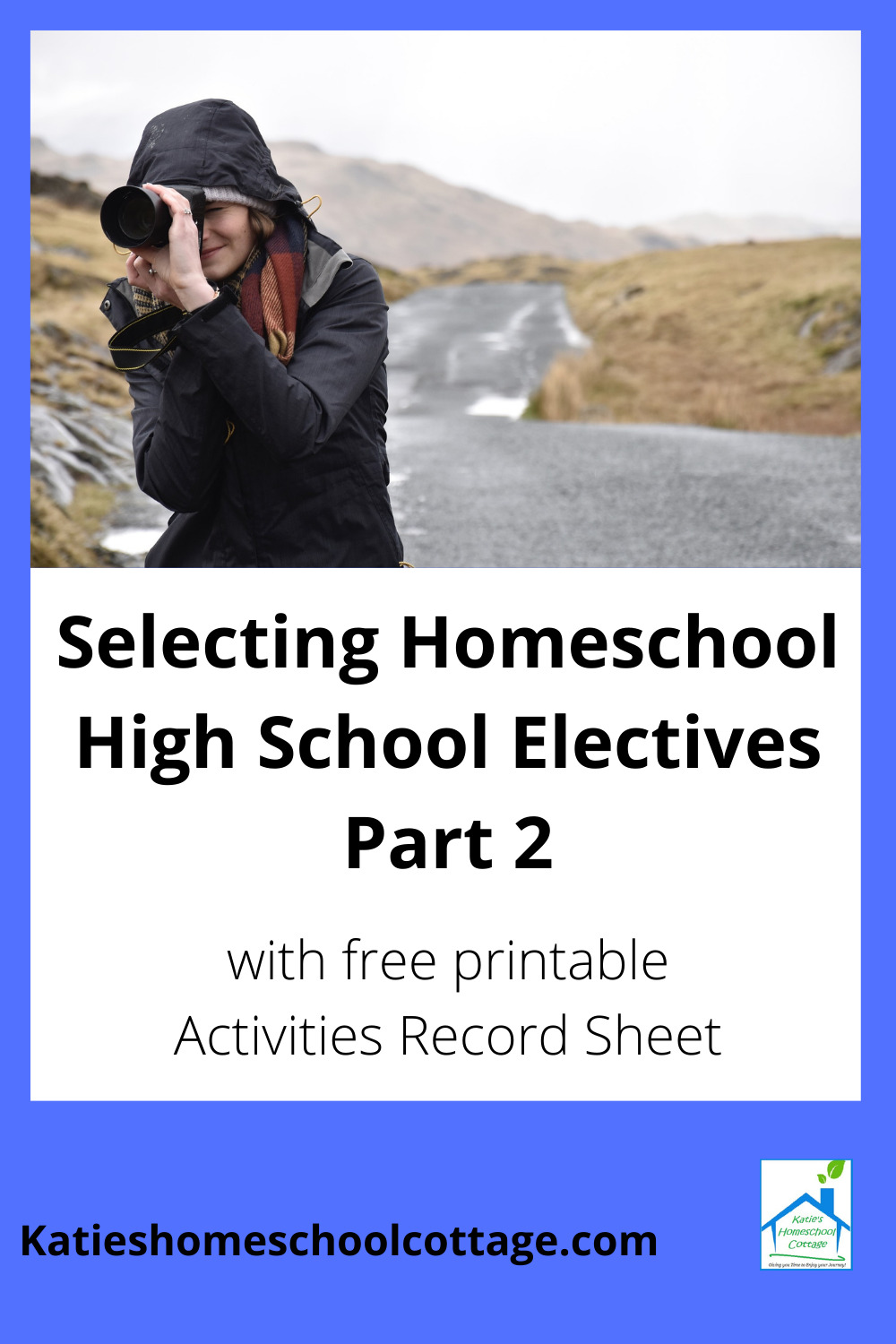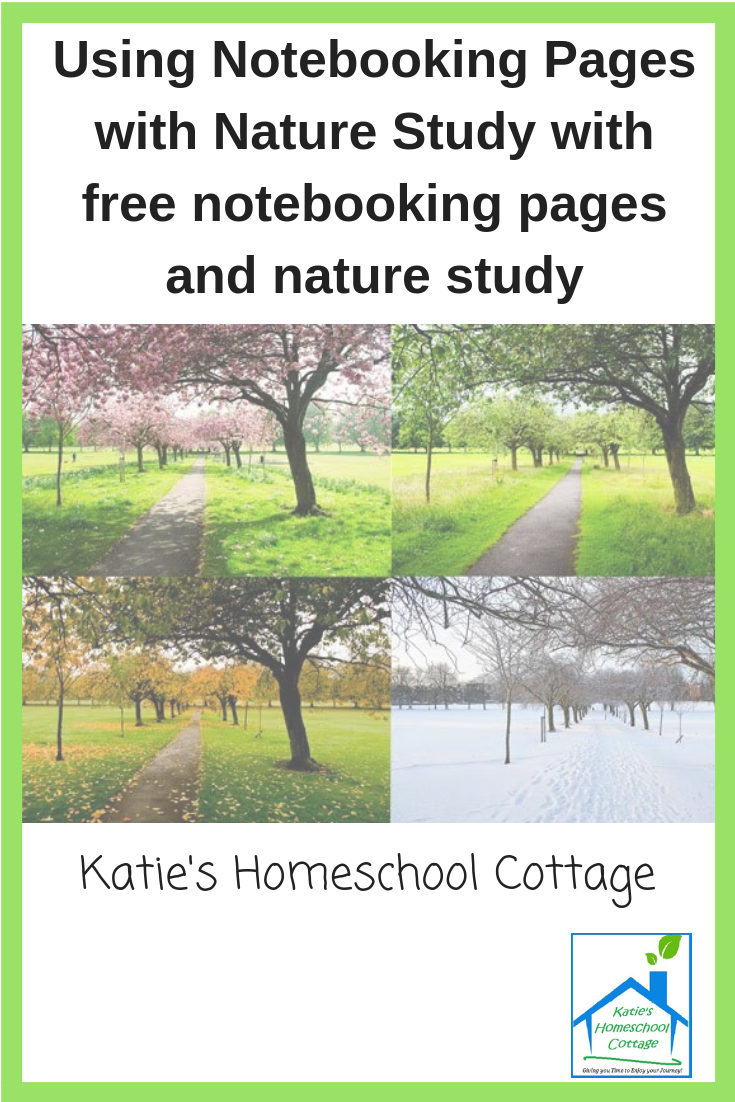We use our notebooking pages in a variety of ways. We include them in our nature studies and make nature journals with them. We use them for copywork and dictation when we follow Charlotte Mason methods. We have had the most fun using them to learn to write essays about what we are learning during a unit study.
We have traveled back to the Middle Ages as scribes in a monastery and illuminated our notebooking pages with different colored glittered gel pens as we wrote an alphabet book about the Middle Ages. We then sewed the pages together with a large tapestry needle and tapestry thread just like the scribes.
We made these kinds of notebooks for various time periods of study and tied them into unit study with books, crafts, projects, plays, and even feasts! Make Your Own ABC Book About…the Middle Ages is only one of our own notebooking ebooks.
 Illuminating a Notebook Page just like the monks
Illuminating a Notebook Page just like the monks
 Writing a notebook page about Medieval Feasts before we have one of our own.
Writing a notebook page about Medieval Feasts before we have one of our own.
A picture of our Medieval Feast with bread bowl trenchers to hold stew.
A reenactment of Beowulf before our performance during our feast.
After your children have become comfortable with their oral narrations of what they have heard you read or what they have read, they should be ready to try written narrations after some of their oral narrations.
You don’t have to have a written narration after every reading and oral narration. We usually write down the most interesting topics to us or what I may feel are the major or most important ideas, events, or people in our study.
When your children are very young, younger than 8, 9, or 10, (Charlotte Mason and other Charlotte Mason homeschoolers begin written narration around 10.) you can do the written narration for your child.
Do you remember from your school days, those big pieces of flimsy tan paper with big lines and dashes in the center, with a big empty space on top for a picture?
And, you would practice writing your words and sentences with those fat pencils and then when you were done, you got to draw or paint a picture of your story?
Well, with written narration for your youngest child, you can have him orally narrate his read aloud to you, while you write his words down for him. When he is done, he can draw a picture or pictures to go along with his story.
You, then, read his story to him as point to each word you are reading. This will connect what you are saying to each word as you say it. Read this story to him routinely and then have him read it to you. It’s okay for him to memorize it and “practice read” it to you.
My younger son wanted to be like his older brother and “write his own book” too, so he started writing his sentences down after his oral narration also. For both my sons, this was another case of forming a habit. It was slow going for both of them.
But, as they stared at the ominous blank piece of paper, I would ask them to repeat to me what they had narrated to me from our read aloud only moments ago.
Then I would say, “See, you have the words you want to use; now just write down the sentence you just told me.” It took them awhile to get over the intimidation of that blank piece of paper even though they had just repeated to me their oral narrations.
First, your children might only be able to write down one or two sentences the first few times they have to write down their narrations.
But, just as we did, your children will grow accustomed to the idea that after narration to you, they will write down their narration on paper.
You will soon see them writing five sentences, then whole pages and eventually ask for another piece of paper if it is a topic they are particularly excited about.
Depending upon the topic we are reading or my sons’ interests, I may choose a notebooking page with a large space for a picture, because I know they will really want to spend time drawing their narration.
Other times, if it is more dry and not as creative, I may give them a notebooking page with a simple picture already on the page or a small square where they draw a little picture of their own.
Bundle of Notebooking Pages to Use for Different History and Science Studies
I have a number of notebooking page sets for different time periods in history and topic areas for science that you can get separately or purchase them all in a bundle at a lower price – Make Your Own ABC Book Bundle Set
You can keep these pages in some kind of notebook binder or slip the pages into sheet protectors and then put these into a notebook.
Either way you have something of a keepsake and study guide of your year together. Your child has something he can look back at and be proud of, and you have something you can use in a portfolio assessment at the end of the school year if you are required to do that in your state.
For middle and high schoolers and narration, their oral and written narration can go beyond just retelling and summarizing what they have read.
This is where their writing can really come naturally from their oral narration and their writing gets interesting.
You can have them write different forms of essays in response to their reading, just as they would need to on any exam they take for college admission or in college.
Great preparation! They can write descriptive narrations of what they have read, personal narrations – even taking on the role of a character in history, science or a literary piece they have just read.
What about a compare/contrast paper between two books or other literary selections they have completed?
Or a process paper after reading a book or two on a topic of interest to them. ( My son is constantly reading books and magazines about fishing – his summer is going to be spent putting a book together with everything he has learned as a 4-H project.)
What about a definition paper?
Start out by defining a word as it means to him or the dictionary and explore in detail what that word or concept really means through detail and examples if you have read a book about democracy for example, or courage, or faith.
Are you getting the idea?
I find, though, the key for my guys, including my oldest, is to let them tell me about it first.
Let them organize their thoughts out loud and bounce ideas off you – even if you don’t speak and they can hear their ideas out loud. Their ideas flow much better in this informal situation before sitting down in front of that ominous blank piece of paper.
You will soon notice, as I do, that your children will be unconsciously narrating to themselves as they read to themselves or after you have read something to them.
My guys will have conversations between themselves, without me or my prompting, about what we have been reading.
Or, like my younger son did today, while he was reading his science book (Exploring Creation with Astronomy) to himself, he was actually narrating what he was reading back to himself – but in a song he made up- while he was reading it.
These are moments that will definitely make you smile and you know that you are doing something right!
Click here to receive over 3000 free notebooking pages of all kinds –
To see a list of other posts related to Charlotte Mason Homeschooling click here.



